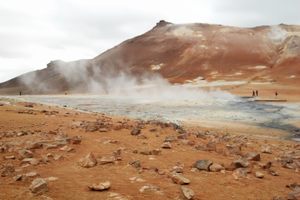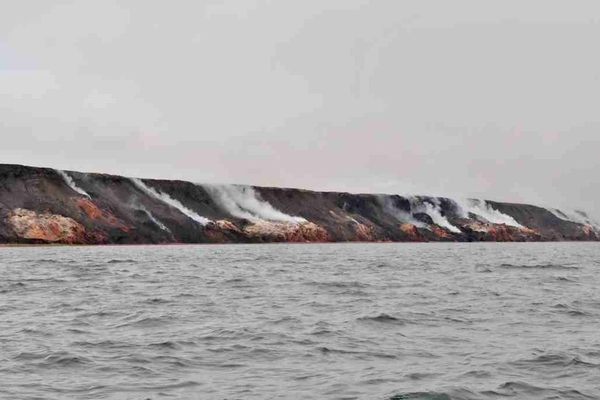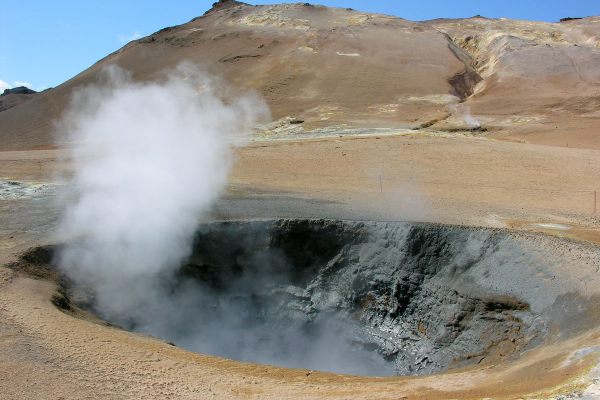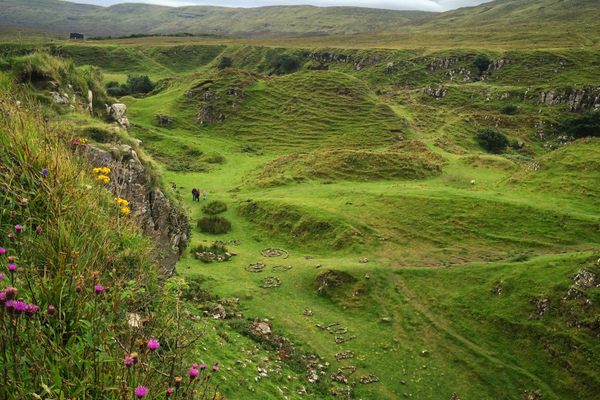About
Ascension Island is just a dot on the globe: a tiny chunk of cinder, 90 kilometers square, almost half way between South America and Africa. Geologically speaking, the island is fairly young. It was created just one million years ago from the hot magma of an underwater volcano along the Mid-Atlantic Ridge, and up until 1850, Ascension was a barren wasteland of lava fields.
It is thought that the island was first discovered in 1501 by the Spanish explorer João da Nova. A dry climate and lack of fresh water made Ascension inhospitable, but it served as a stopping point for sailors searching for food in the form of seabirds and green turtles.
The harsh conditions made Ascension an ideal open prison. In 1725, Dutch officer Leendert Hasenbosch was exiled to the island as punishment for sodomy. Nearly a year later, British mariners discovered his tent, diary, and belongings. Most likely, the man died of thirst.
It wasn't until 1815 that the island became permanently inhabited. That year, the British Royal Navy garrisoned the island as a precautionary measure after imprisoning Napoleon on Saint Helena, about 1,300 kilometers to the southeast.
Under naval occupation, Ascension became an established imperial outpost, and was a rest stop for scientist explorers like Charles Darwin and Joseph Dalton Hooker. It was the botanist Hooker, at the encouragement of Darwin, who would devise a plan that would radically change the island's habitability in what was one of the most successful ecological experiments of all time.
In 1847, Hooker, with help from his father who directed the Royal Botanical Gardens, Kew, arranged for trees to be shipped to the island. The idea was that the planted trees would capture rain and make the soil fertile, transforming the barren landscape into a lush garden. Year after year, new varieties of trees arrived from botanical gardens in Europe, South Africa, and Argentina. By the late 1870s, the island was home to Norfolk pines, eucalyptus, bamboo, and banana trees.
The plan worked perfectly. Green Mountain, the highest peak on the island, became a "cloud forest," characterized by persistent low-level cloud cover. The trees draw moisture from these clouds, enriching the soil and allowing vegetation to thrive. Darwin, Hooker, and the Royal Navy effectively turned Ascension into an island oasis, and in the process became the architects of the very first experiment in terraforming.
Despite its remoteness and small population, Ascension does have a modest tourism industry. In addition to fishing and hiking, visitors can enjoy playing golf on a course dubbed by the government's own website as the worst in the world. The website of Ascension's Obsidian Hotel explains why: "The 'Greens' are called 'browns' and are made of crushed compacted lava smoothed flat with diesel oil."
While Ascension Island remains relatively unknown, its legacy may eventually prove to be profoundly important to humans' survival; the success of the island's artificial ecosystem, which is one of few large-scale planned forests in the world, has given hope to those that believe the colonization of Mars is necessary.
Related Tags
Know Before You Go
All visitors are required to obtain an entry permit before traveling.
Community Contributors
Added By
Published
February 11, 2013
































